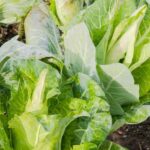In today’s blog post, we will delve into an important question that many gardeners have pondered – can Preen be used on vegetable gardens? As avid gardeners ourselves, we understand the constant battle against weeds and the desire to find effective and efficient solutions. Preen has gained popularity as a weed control product, but its use in vegetable gardens may raise concerns.
The purpose of this article is to provide you with comprehensive information about using Preen on your beloved vegetable garden. We will explore what exactly Preen is and how it functions as a weed control product. Additionally, we will discuss both the benefits and potential risks associated with its use on vegetable gardens, providing you with a well-rounded understanding of whether or not it is suitable for your specific gardening needs.
It is crucial to make informed decisions when it comes to our gardens and the products we introduce into them. By discussing the use of Preen on vegetable gardens, we aim to equip you with the knowledge necessary to determine if this weed control product aligns with your goals as a gardener. So let’s explore all aspects of using Preen in your vegetable patch and discover if it truly is the solution you’ve been looking for.
What is Preen
Preen is a popular weed control product that is commonly used in gardens and landscapes. It is a pre-emergent herbicide, meaning that it prevents weed seeds from germinating and growing. Preen works by creating a chemical barrier on the surface of the soil, which inhibits the growth of new weeds.
The active ingredient in Preen is trifluralin, which targets a wide range of annual grasses and broadleaf weeds. When applied correctly, Preen can effectively control common garden weeds like crabgrass, dandelions, chickweed, and purslane. It is important to note that Preen does not kill existing weeds or vegetation; rather, it acts as a preventive measure to stop new weeds from growing.
One of the main purposes of using Preen in vegetable gardens is to reduce weed growth. Weeds compete with vegetable plants for nutrients, sunlight, and moisture, which can hinder their growth and productivity. By applying Preen before weed seeds germinate, gardeners can create a weed-free environment for their vegetables to thrive.
In addition to reducing weed growth, using Preen in vegetable gardens can have other benefits as well. Since fewer weeds are present, there is less need for manual weeding or using other weed control methods such as mulching. This can save gardeners time and effort in maintaining their vegetable beds. Moreover, by controlling weeds with Preen, gardeners can conserve water since there will be less competition for moisture from weeds.
While Preen can be a useful tool for managing weeds in vegetable gardens, it’s important to note that it should be used with caution and according to the instructions provided on the packaging. Over-application or misuse of pre-emergent herbicides like Preen can potentially harm desirable plants or impact the surrounding environment.
It is essential to follow recommended dosage rates and application guidelines when using Preen on vegetable gardens. Also, consider factors such as timing and potential reapplication for effective weed control. Reading the instructions thoroughly and understanding the precautions will ensure that Preen is used safely and efficiently in vegetable gardens.
Overall, when used correctly, Preen can be a valuable tool for controlling weeds in vegetable gardens. Its ability to reduce weed growth, promote healthier plants, and conserve water makes it an attractive option for many gardeners. However, it’s important to keep in mind the precautions and considerations mentioned above to ensure successful use of this weed control product on your vegetable garden.
Benefits of using Preen on Vegetable Gardens
Preen is a widely-used weed control product that offers several benefits when used on vegetable gardens. By understanding these advantages, gardeners can make informed decisions about incorporating Preen into their gardening practices.
One of the primary benefits of using Preen on vegetable gardens is its ability to reduce weed growth. Weeds can be detrimental to the overall health and productivity of a garden by competing with vegetable plants for nutrients, water, and sunlight. Preen works by forming a barrier on the soil surface that inhibits weed seeds from germinating. This means fewer weeds to contend with, allowing vegetable plants to have better access to essential resources for growth.
In addition to reducing weed growth, Preen also promotes healthier plants in vegetable gardens. Weeds not only compete with vegetables for resources but can also host pests and diseases that can spread to the plants. By controlling weeds with Preen, gardeners are effectively minimizing the chances of pest and disease infestations, leading to healthier and more robust vegetable plants.
Furthermore, using Preen on vegetable gardens can help conserve water. Weeds tend to absorb significant amounts of water from the soil and can lead to water runoff issues when watering vegetable plants. With fewer weeds present in the garden, less water is wasted on unwanted vegetation, allowing more efficient water usage and conservation efforts.
To fully reap these benefits when using Preen on vegetable gardens, it is crucial to follow the instructions on the packaging carefully. Applying an appropriate dosage during the recommended timing will ensure optimal effectiveness while minimizing any potential risks or side effects associated with using the product.
Precautions and Considerations
Precautions and Considerations: Highlighting the importance of reading and following the instructions on the Preen packaging, discussing any potential risks or side effects, and providing tips for safe and efficient application
Using Preen on vegetable gardens can have many benefits for controlling weeds and promoting healthier plants. However, it is crucial to take certain precautions and considerations before applying the product. By carefully following the instructions on the Preen packaging, you can ensure safe and efficient application while minimizing any potential risks or side effects.
1. Read and Follow Instructions: Before using Preen in your vegetable garden, it is essential to thoroughly read and understand the instructions provided by the manufacturer. The packaging will provide information such as recommended dosage, application method, timing, and any specific precautions for use.
2. Protect Yourself: When handling Preen or any other chemical product, it is important to prioritize your safety. Wear protective gloves, goggles, long sleeves, long pants, and closed-toe shoes while applying Preen to avoid contact with your skin or eyes.
3. Avoid Contamination: To prevent contamination of your vegetables or soil with harmful chemicals, make sure not to apply Preen near edible parts of plants or close to harvest time. Also, keep children and pets away from treated areas until the product has dried completely.
4. Timing: Proper timing is crucial when using Preen in vegetable gardens. Apply the product after sowing seeds or transplanting seedlings but before these plants emerge or establish their root systems. This way, you can effectively control weeds without inhibiting the growth of desired vegetables.
5. Storage: Store any unused Preen in a cool, dry place away from direct sunlight. Make sure to keep it out of reach of children and pets to avoid accidental ingestion or misuse.
While taking these precautions will help ensure the safe and effective use of Preen in your vegetable garden, it is still important to monitor your plants for any potential side effects. If you notice any adverse reactions or unexpected changes in your vegetables after applying Preen, discontinue use immediately and seek advice from a gardening professional.
Remember, proper application and precautionary measures will help you achieve the desired results while minimizing any risks associated with using Preen on your vegetable garden.
Compatible Vegetable Plants
Choosing Compatible Vegetable Plants
When considering the use of Preen on your vegetable garden, it is important to ensure that the product is compatible with the types of plants you are growing. While Preen is generally safe for most vegetable plants, there are some exceptions and precautions to keep in mind.
It is recommended to consult the packaging or manufacturer’s website for a complete list of vegetables that are compatible with Preen. However, here are a few examples of common vegetable plants that can safely coexist with Preen:
- Tomatoes: One of the most popular vegetables in home gardens, tomatoes are generally considered compatible with Preen. However, it is important to apply Preen around the base of the tomato plant and avoid direct contact with the foliage to prevent any potential damage.
- Peppers: Whether you’re growing bell peppers or hot chili peppers, they can thrive alongside the use of Preen. Similar to tomatoes, applying Preen around the base of the pepper plants while avoiding contact with leaves will help protect them from weed competition.
- Beans: Whether it’s pole beans or bush beans, they can coexist well with Preen. Beans have shallow roots, so it’s crucial to apply a light layer of mulch or compost before applying Preen to prevent any potential damage to their delicate root systems.
- Cucumbers: These crunchy and refreshing vegetables are safe to grow alongside Preen. Applying a layer of mulch or straw around cucumber plants before using Preen can help enhance weed control without harming the plant.
Remember that while these vegetables can safely coexist with Preen, it is still essential to follow proper application guidelines and avoid direct contact between the product and plant foliage to minimize any potential risks or negative effects.
Why Compatibility Matters
Ensuring compatibility between your chosen vegetable plants and Preen is crucial for your garden’s success. By using Preen on compatible vegetable plants, you can benefit from enhanced weed control without causing harm to your produce.
Vegetable plants that are compatible with Preen will still receive the weed-controlling benefits of the product while growing in a healthier and less competitive environment. The absence of weeds competing for nutrients, water, and sunlight allows vegetables to flourish and thrive. This, in turn, can lead to improved yield and overall plant health.
Moreover, using Preen on compatible vegetable plants also helps conserve water. Weeds tend to be voracious consumers of water, often diverting precious resources away from vegetable plants. By reducing weed growth with Preen, the amount of water needed for your vegetable garden decreases significantly.
In summary, choosing compatible vegetable plants when considering the use of Preen is essential to ensure a successful garden. It promotes healthier plant growth, reduces weed competition, and conserves vital resources like water. Remember to consult the packaging or manufacturer’s website for a complete list of compatible vegetables before applying Preen to your garden.
Potential Risks to Vegetable Gardens
One potential risk associated with using Preen on vegetable gardens is the potential for damage to specific types of vegetables. While Preen is generally safe to use on most vegetables, there are certain plants that may be more susceptible to harm. For example, leafy greens such as lettuce and spinach can be sensitive to the chemicals found in Preen and may experience stunted growth or discoloration.
Another risk to consider is the possible interference with pollinators. Preen works by preventing weed seeds from germinating, but it can also have unintended effects on beneficial insects like bees and butterflies. These insects play a crucial role in pollinating vegetable plants, so it’s important to take precautions to protect them while using Preen.
To minimize these risks, it’s essential to follow the instructions on the Preen packaging carefully. This includes applying the product at the recommended dosage and avoiding direct contact with desirable plants. It’s also a good idea to avoid applying Preen during times when bees and other pollinators are most active, such as early morning or late evening.
In order to monitor any potential negative effects on vegetables or pollinators, it is recommended to start with a small test area before applying Preen to the entire vegetable garden. Observing the plants closely after application will allow you to determine whether any adverse reactions occur and make adjustments accordingly.
| Potential Risks | Solutions |
|---|---|
| Damage to specific types of vegetables | Ensure that vulnerable plants are not directly exposed or consider alternative weed control methods |
| Interference with pollinators | Avoid applying Preen during times when pollinators are active and monitor for any negative effects |
Alternatives to Preen
Manual Weeding
One of the most effective alternatives to using Preen on vegetable gardens is manual weeding. This method involves physically removing weeds by hand or with the help of gardening tools. Manual weeding allows for targeted weed removal, ensuring that only unwanted plants are removed while leaving the desired vegetables unharmed. It is a time-consuming task and requires regular maintenance, but it is a safe and organic way to control weeds in vegetable gardens.
When manually weeding a vegetable garden, it is important to be thorough and remove all visible weed growth, including both the roots and above-ground portions of the plants. It is advisable to pull weeds when the soil is moist, which makes it easier to uproot them completely. Regularly inspecting the garden for any new weed growth and promptly removing them can help prevent the spread of weeds and minimize competition for nutrients.
Mulching
Another effective organic alternative to using Preen on vegetable gardens is mulching. Mulch helps suppress weed growth by creating a barrier between the soil and sunlight, preventing weed seeds from germinating and emerging. Organic materials such as straw, wood chips, leaves, and grass clippings can be used as mulch in vegetable gardens.
To use mulch as a weed control method, apply a layer of organic material around your vegetable plants, ensuring that the mulch does not come into direct contact with stems or foliage. The thickness of the mulch should be about 2-4 inches to effectively suppress weed growth. Mulching not only prevents weeds but also helps retain soil moisture by reducing evaporation and acts as insulation during temperature fluctuations.
Companion Planting
Companion planting is another organic alternative that utilizes beneficial plant combinations to naturally deter or confuse pests, including weeds. By strategically planting certain flowers or herbs alongside your vegetables, you can create an environment where weeds are less likely to thrive. Some examples of companion plants that deter weeds include marigolds, nasturtiums, and garlic.
When implementing companion planting for weed control, it is important to research the specific plants and their compatibility with your vegetable garden. Some plants may compete with vegetables for nutrients or space, so it is essential to choose companions that have similar growing requirements and will not hinder the growth of your desired crops. Additionally, proper spacing and weed management in between companion plants are crucial to ensure optimal results.
By utilizing manual weeding, mulching, and companion planting techniques, vegetable gardeners can effectively control weeds without the use of chemical products like Preen. These methods provide environmentally-friendly options that promote healthier soil and plants while reducing the risk of harmful effects on humans, animals, or beneficial insects in the garden. Each alternative has its own benefits and considerations, so it is important to explore which method works best for your specific vegetable garden conditions.
Step-by-Step Guide to Using Preen on Vegetable Gardens
Using Preen on a vegetable garden can be an effective way to control weeds and promote healthier plants. However, it is crucial to follow the proper steps for applying Preen to ensure its maximum effectiveness and safety. This step-by-step guide will provide you with all the information you need to know in order to use Preen on your vegetable garden successfully.
Preparation is key before applying Preen to your vegetable garden. Start by removing any existing weeds manually or using other organic methods such as mulching or companion planting. This will help ensure that the Preen can effectively prevent weed growth without interference from existing weeds.
Next, determine the recommended dosage of Preen for your specific vegetable garden. The appropriate dosage is typically listed on the packaging, based on the size of the area you need to treat. It is important to carefully measure out and apply the correct amount of Preen to avoid overuse or underuse, which may affect its efficacy.
Timing is crucial when applying Preen to a vegetable garden. As a pre-emergent weed control product, it must be applied before weed seeds germinate. Consult the instructions on the package for specific timing recommendations based on your region and climate. Applying Preen too early or too late may limit its effectiveness in preventing weeds from growing.
In some cases, reapplication of Preen may be necessary throughout the growing season. This is especially true if there is heavy rainfall or significant irrigation that washes away the product. Check the instructions for guidance on when and how often reapplication should occur.
By following these step-by-step instructions, you can properly apply Preen to your vegetable garden and enjoy its benefits in controlling weeds and promoting healthier plants. Remember to always read and follow the instructions provided by the manufacturer for optimal results.
DISCLAIMER: It is important to note that while this guide provides general information about using Preen on vegetable gardens, every garden’s needs may vary. It is always recommended to consult the manufacturer’s instructions and seek professional advice if needed.
Real-life Experiences and Testimonials
One of the most effective ways to assess whether a product like Preen is suitable for use in your vegetable garden is by hearing about real-life experiences and testimonials from other gardeners. These anecdotes can provide valuable insight into the benefits, challenges, and overall effectiveness of using Preen as a weed control product in a vegetable garden.
Many gardeners have reported positive experiences with using Preen on their vegetable gardens. Jennifer, a dedicated vegetable gardener from Ohio, shared her success story after incorporating Preen into her gardening routine. She stated that since she started using Preen, the weed growth in her garden has significantly decreased, saving her countless hours of manual weeding.
Not only has it reduced the competition for nutrients between weeds and vegetables, but it has also promoted healthier plants by minimizing the stress caused by weed infestation. Additionally, Jennifer mentioned that she noticed a reduction in water usage because fewer weeds meant less evaporation and efficient water absorption by her vegetables.
Despite these success stories, it’s essential to consider the challenges some gardeners have faced when using Preen on their vegetable gardens. Some individuals have reported an initial learning curve when it comes to applying the correct dosage and timing of application. It is crucial to carefully read and follow the instructions provided on the packaging to avoid any potential negative effects.
Another challenge that some gardeners have encountered is the need for repeated applications throughout the growing season to maintain effective weed control. While Preen provides long-lasting protection against weeds, it may require multiple applications depending on factors such as soil conditions and weed pressure.
By listening to these real-life experiences and testimonials from fellow gardeners who have used Preen on their vegetable gardens, you can gain insight into both the benefits and challenges associated with its use. It’s important to remember that results may vary depending on individual gardening practices, regional conditions, and specific vegetable plantings.
It’s always recommended to start with a small area of your garden when trying out a new product like Preen and observe the results before applying it widely. Ultimately, making an informed decision based on both positive experiences and potential challenges will help you determine whether Preen is the right fit for your vegetable garden.
Conclusion
In conclusion, this blog post has aimed to shed light on the use of Preen in vegetable gardens. We started by introducing Preen and explaining its purpose as a weed control product.
Then, we delved into the benefits of using Preen in vegetable gardens, which include reducing weed growth, promoting healthier plants, and conserving water. We also highlighted the precautions and considerations that need to be taken when using Preen, emphasizing the importance of following instructions and considering any potential risks or side effects.
Moreover, we discussed the compatibility of Preen with different vegetable plants and reassured readers that it is safe for their produce. However, it is crucial to be aware of potential risks associated with Preen, such as damage to specific types of vegetables or interference with pollinators. To cater to those who prefer organic alternatives, we explored options like manual weeding, mulching, and companion planting.
To wrap up our discussion, we provided a step-by-step guide on how to properly apply Preen to a vegetable garden and shared real-life experiences and testimonials from individuals who have used Preen on their own gardens. Through these accounts, readers can gain insights into both successes and challenges associated with using this product.
Ultimately, when deciding whether or not to use Preen on their vegetable gardens, readers should consider all the information presented here. By making informed decisions based on their specific needs and circumstances, they can successfully maintain weed-free and thriving gardens while ensuring the wellbeing of their crops.
Frequently Asked Questions
What should you not use Preen on?
Preen should not be used on edible plants or any areas where you plan to grow vegetables, fruits, or other edible crops. The product contains chemicals that can potentially harm or contaminate these types of foods.
It is essential to exercise caution and follow the instructions provided by the manufacturer to ensure the safety and well-being of your plants and the produce they yield.
Is Preen safe for tomato plants?
Yes, Preen can be safely used around tomato plants as long as it is applied properly. Tomato plants are considered non-edible greens by the manufacturer, so applying Preen around them is generally deemed safe.
However, it is crucial to avoid direct contact of the product with any part of the tomato plant to prevent potential adverse effects. Carefully read and follow the directions on the package before using it near any crops.
What kills weeds in a vegetable garden?
There are several options for killing weeds in a vegetable garden that are safe for your edible plants. One effective method is hand-pulling weeds regularly, ensuring you remove them completely along with their roots to prevent regrowth. Mulching your garden beds can also help suppress weed growth by blocking sunlight access to their seeds.
Applying corn gluten meal as a natural pre-emergent herbicide can inhibit weed seed germination without harming your vegetable plants. Additionally, using boiling water or vinegar sprays directly on weeds can be an effective organic weed control method in small areas where caution is exercised not to harm your vegetables.

If you’re looking to get into vegetable gardening, or are just looking for some tips on how to make your current garden better, then you’ve come to the right place! My name is Ethel and I have been gardening for years. In this blog, I’m going to share with you some of my best tips on how to create a successful vegetable garden.





